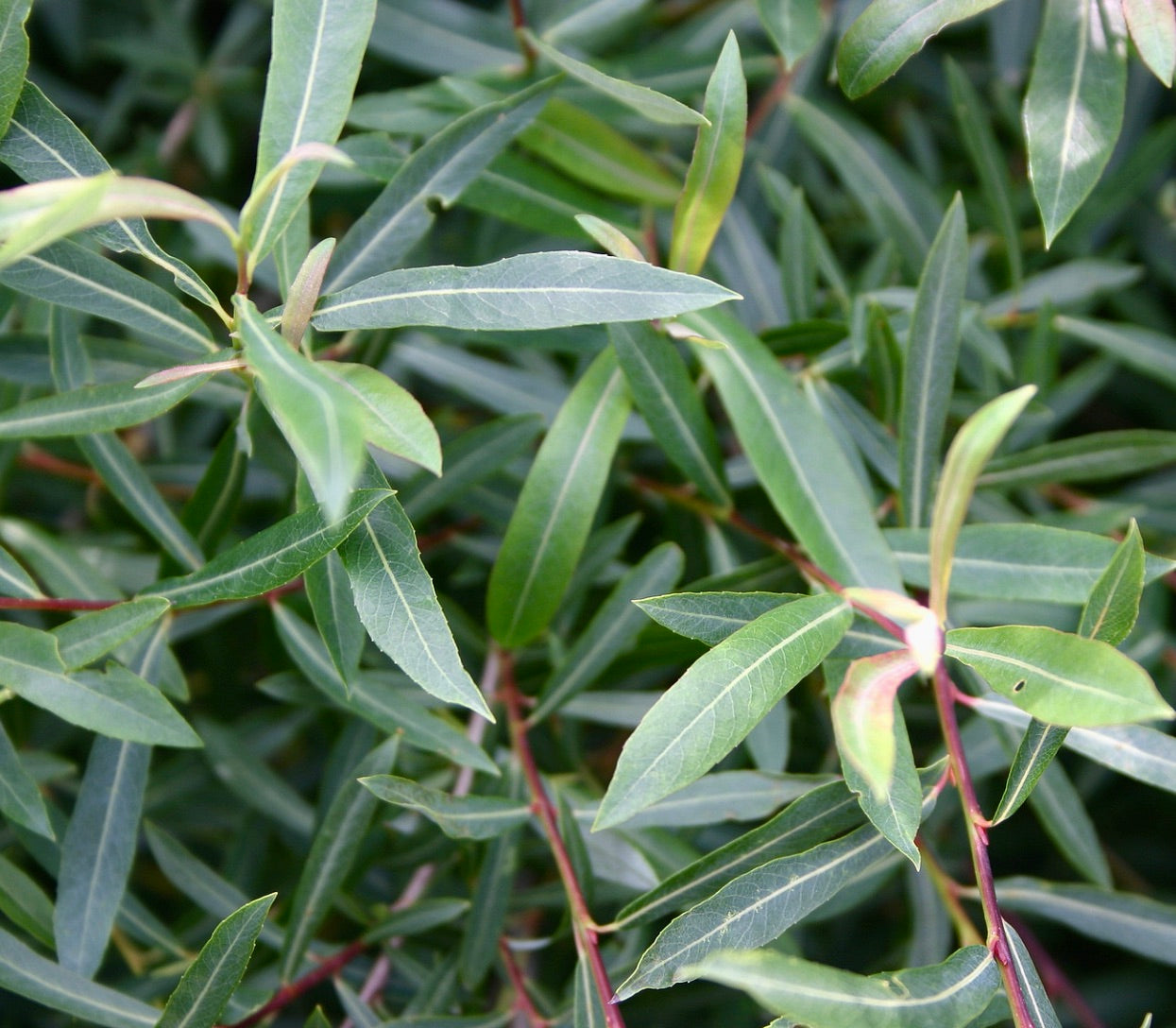- Catalogo Piante
Salix purpurea gracilis | Salice viola | Salice porporino
Salix purpurea gracilis | Salice viola | Salice porporino
Impossibile caricare la disponibilità di ritiro
Descrizione della pianta
Salix purpurea gracilis, comunemente chiamato salice viola, affascina con i suoi rami sottili ed eleganti e le foglie strette. Questo salice europeo mostra una silhouette delicata e aggraziata che aggiunge fascino a qualsiasi paesaggio. Le persone apprezzano il Salix purpurea gracilis per la sua forma raffinata e le sue sottili sfumature violacee sui germogli giovani, che contrastano meravigliosamente con il suo fogliame verde.
La specie Salix purpurea, compresa la varietà purpurea gracilis, si distingue per la sua adattabilità e il suo valore ornamentale. I giardinieri amano il salice viola snello per i suoi ramoscelli sottili e la sua texture morbida. Offre inoltre un elemento verticale d'impatto in giardini naturalistici e ambienti lacustri. Il salice a foglie strette è un simbolo di grazia e bellezza naturale, spesso ammirato per i suoi rami fini e sottili che ondeggiano dolcemente nella brezza.
- Presenta foglie strette a forma di lancia con una texture liscia
- Mostra lievi tonalità violacee sui rami giovani
- Ha un portamento elegante e eretto
- Origina da habitat umidi in tutta Europa
- Offre una silhouette sottile e delicata nei progetti di giardino
Oltre alle sue qualità ornamentali, il salice aggraziato arricchisce la biodiversità offrendo rifugio alla fauna selvatica. La sua forma snella e il fogliame morbido rendono il Salix purpurea gracilis un favorito tra gli appassionati del paesaggio che cercano un aspetto raffinato e naturale. La combinazione di colore delicato e struttura raffinata rende questo salice un tesoro botanico unico.
IMPORTANTE: Le immagini mostrano la pianta madre, che non è in vendita. L'offerta include una pianta delle dimensioni indicate nella descrizione.
Famiglia botanica: Salicaceae
Genere botanico: Salix
Specie botanica: Salix purpurea gracilis
SKU:WP-2639-S
Coltivazione
Coltivazione
Informazioni e Avvertenze
Informazioni e Avvertenze
Altezza della pianta:
Diametro della pianta:
Dimensioni del vaso:
Innesto/Non innestato: Not Grafted
Avvertenza: Si prega di notare che la maggior parte delle piante cambia con le stagioni. Se è presente il fogliame, potrebbe essere caduto o aver cambiato colore.
Condividi


